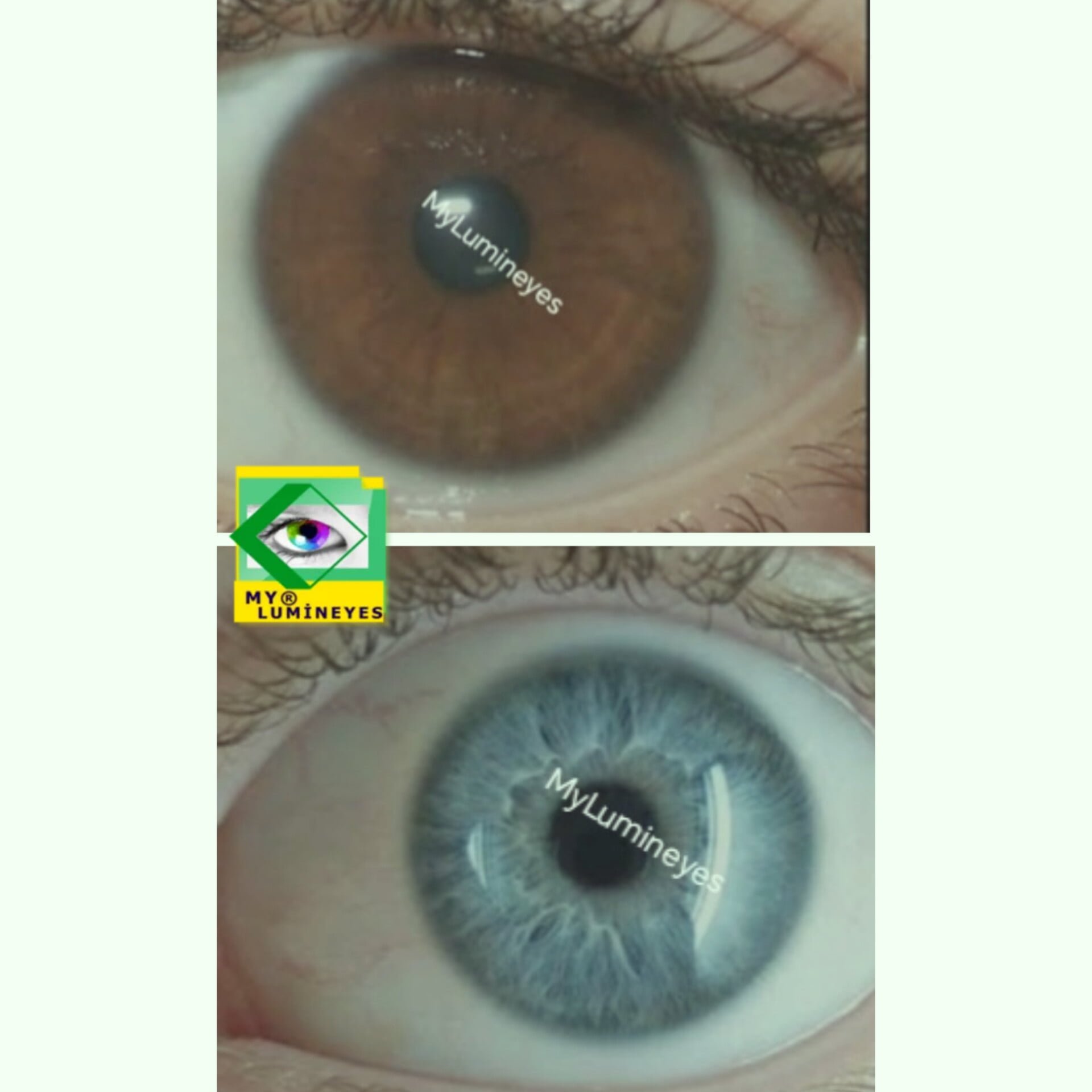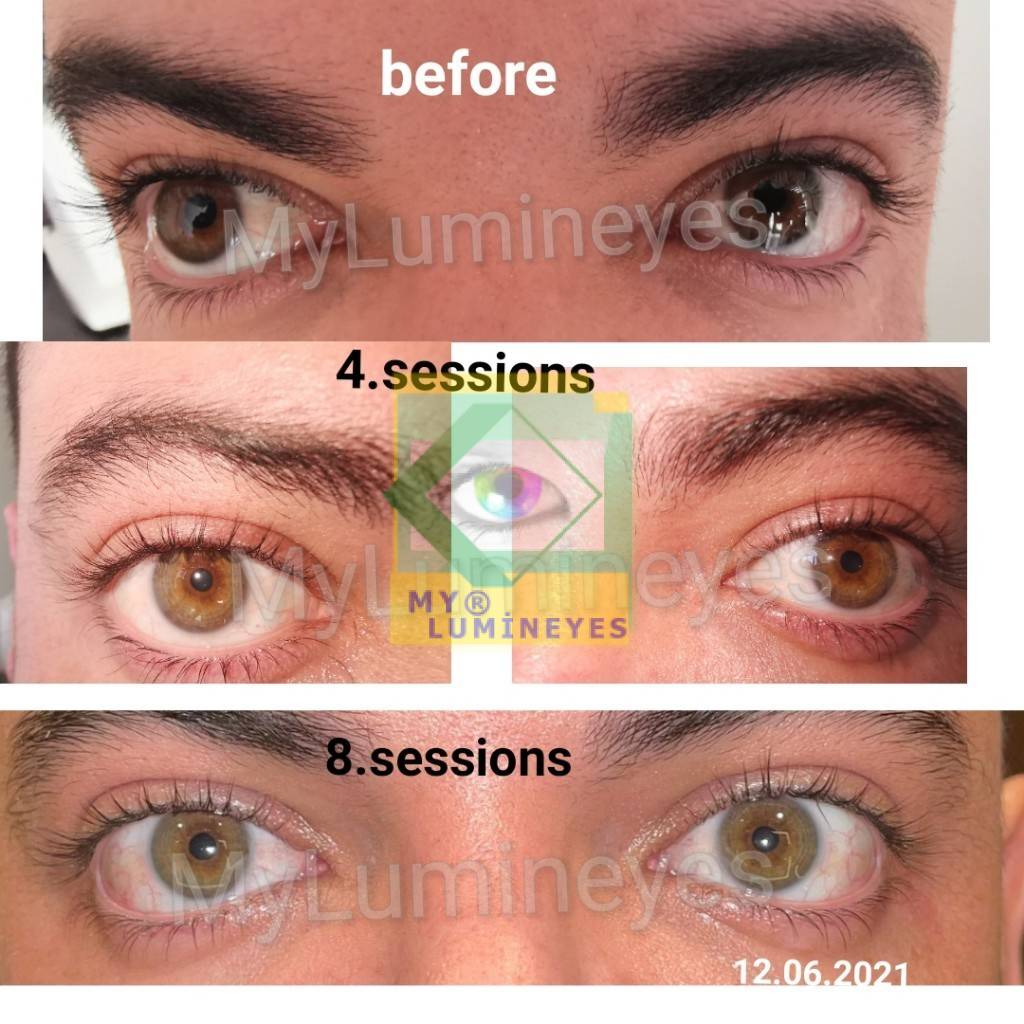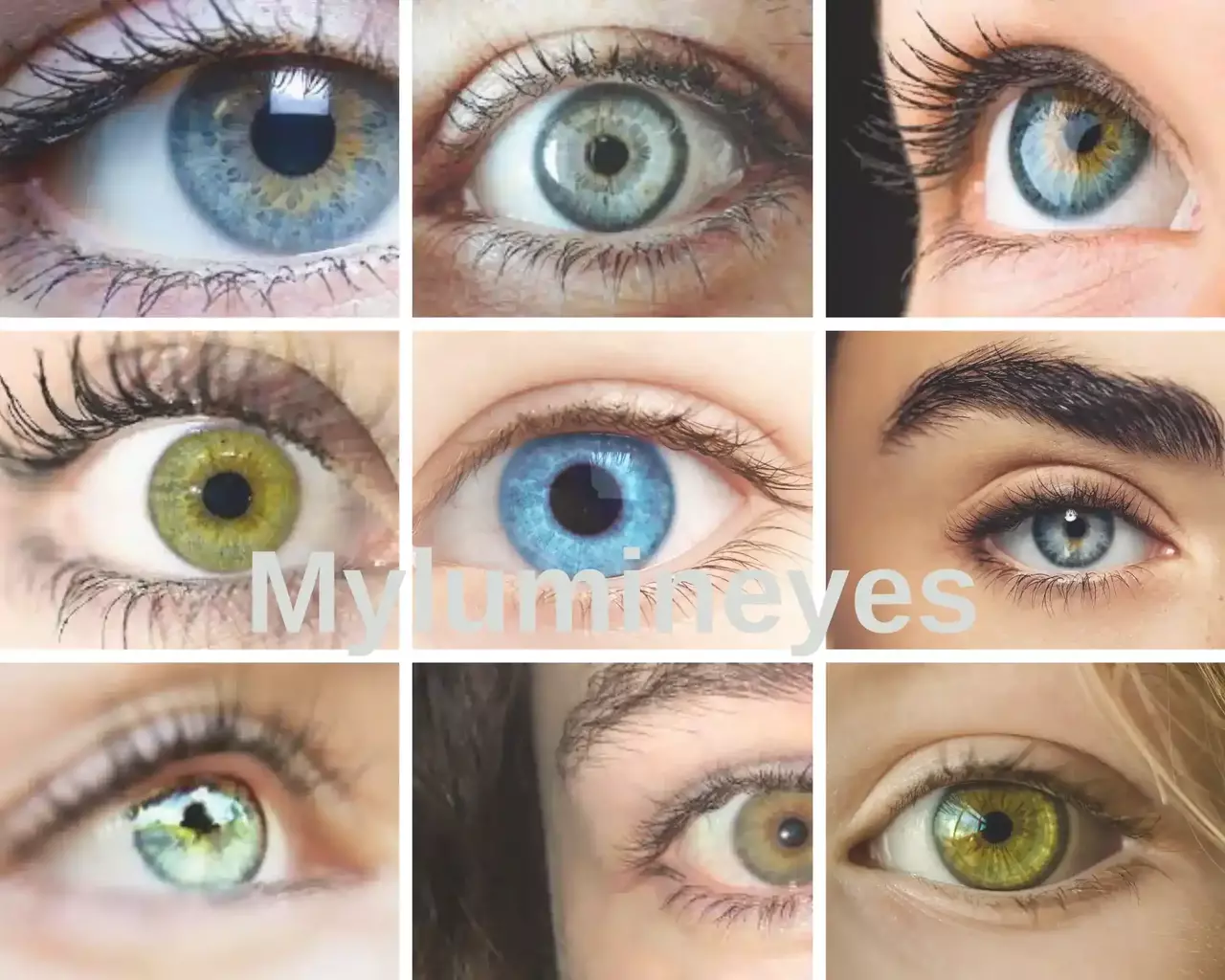Changing your eye color-Laser depigmentation
Changing your eye color by laser iris depigmentation is a serious job that can’t be done in regular clinis. This procedure, known as laser depigmentation or photoablative iridosplasty, is utilized to lighten the color of the eyes by focusing on the cells responsible for producing melanin, the pigment that determines the color of the skin, hair, and eyes.
Dark brown eye colors are a consequence of elevated melanin levels, while light hues are a result of reduced melanin synthesis. Genetics is the scientific discipline that investigates the transmission of features from one generation to another and the diversity of hereditary characteristics that influence the development of eye color.
When it comes to predicting the potential eye color of their offspring, the eye color of a spouse plays a significant role.
It is commonly observed that the offspring of two parents with blue eyes frequently inherit the same eye color. When one parent has blue eyes and the other has brown eyes, the predictability of a child’s eye color decreases. Still, it is possible for a child to have different eyes than their biological parents. The presence of additional genetic components in the familial lineage could explain this phenomenon. For example, a child may develop blue eyes even if their parents have brown eyes, as long as their grandparents have the blue eye feature.
If you want to know the genetic source of a newborn baby’s eye color, you should be patient and wait a few months.
An individual’s eye color changing and becoming more vivid in the first few months of life is a common phenomena. This happens because the human body, and more especially the eye region, produces melanin continuously for about six months after birth thanks to specialized cells known as melanocytes. Generally speaking, after early birth, eye color is somewhat constant.
The iris, being the pigmented part of the eye, is the anatomical structure that needs adjustments to change the eye color. The iris possesses the ability to provide individuals with a variety of eye colors, such as black, brown, green, and attractive blue.
The combination of genes inherited from the parents determines the color of the iris.
Accurate predictions of a child’s eye color can be quite challenging due to the complex genetic combinations that can result in eye colors that do not align with those of either parent. Yet, there is a significant group of people who are interested in learning about natural ways to change their eye color at home.

What methods can be used to achieve a lighter eye color?
There are multiple methods available for changing the color of your eyes, such as iris implant surgery, keratopigmentation, and laser eye color change techniques. The surgical procedure called iris implantation involves the insertion of an artificial iris into the eye. The original intention behind its development was to tackle ocular abnormalities, specifically albinism and aniridia.
Ever wanted to permanently change the color of your eyes?
There have been discussions regarding surgical procedures that claim to offer the ability to change the color of one’s eyes to a preferred shade.
Procedure for Changing Eye Color
Dr. Mustafa Mete developed the “Laser iris depigmentation” procedure to help individuals with heterochromia correct the color of their eyes. “MYLumineyes” is a unique laser eye color change technique that uses a different laser than the traditional Lumineyes process. This process works well to turn brown eyes gray, hazel, or blue-green. Fast and reasonably priced laser eye color changing surgery from MyluminEyes is well-known.
You really should conduct a lot of research before changing the color of your eyes permanently.
Eye color change surgery may cost vary depending on the facility you choose. Lumineyes offers a customisable technique called Mylumineyes. At the end, everything works out more safer, better, and more successfully. Setting your eye health first, MyluminEyes offers affordable, quick laser eye color modification surgery. With our cutting edge process, feel a natural metamorphosis. Known also as laser-assisted surgery, laser eye color change surgery is a medical technique that uses cutting edge laser technology to carry out a variety of surgical procedures.
This method removes the pigment cells that give the eye its color, therefore changing the iris’s color.. When individuals are not present, the color of their brown eyes may appear to be blue. This occurs because blue eyes lack pigmentation. This procedure is only available for individuals with brown eyes. Like any other surgical procedure, traditional laser eye surgeries can have potential side effects. Nevertheless, it is important to highlight that the Lumineyes approach distinguishes itself from this category.
What are iris implants?.
The iris, an interior component, largely determines the color of an eye. Said another way, iris implant surgery is a major medical procedure meant to change the color of the eye.
In addition, it will address multiple important issues. Unfortunately, this approach yields subpar results in terms of both appearance and security.
Additionally, it is crucial to recognize that after undergoing the eye color-changing procedure, there may be various complications that could arise, potentially requiring another surgical intervention. Unfortunately, removing it causes long-term damage to the area around the eye. As a result, iris implants can result in vision loss as one of its potential serious outcomes. Consequently, there is a high likelihood of a decrease in eye health.
This treatment aims to offer support to individuals with irises that are either missing or impaired.
Throughout the surgical procedure, a highly skilled ophthalmologist carefully makes an incision in the cornea, the transparent layer in front of the iris, and delicately places a pigmented silicone implant. Afterward, the implant is expanded to cover the iris. Studies have shown that people who have undergone iris implantation procedures experience notable complications.
There is a possibility that an additional surgical procedure may be necessary to remove the implants. In the case of a corneal injury, a cornea transplant may be required as an alternative solution. A majority of participants in a small-scale study experienced postoperative complications.
Surgical Procedure for Keratopigmentation
- The procedure known as laser keratopigmentation, also called corneal tattooing, is essentially the same thing.
- This procedure does not change the pigmentation of the iris. Instead, it adds pigmentation to the cornea to cover up the natural color of the iris.
- Keratopigmentation uses advanced laser technology to produce a series of circular tunnels within the cornea, resulting in a precise and consistent depth.
- Following that, a colored dye is applied to the underground passageways. Femtosecond lasers deliver a consistent and equal dispersion of color, outperforming previous “needle-puncture” procedures.
- Keratopigmentation uses anesthetic eye drops to produce local anesthesia and numbness in the eye area. The participant’s head will be firmly fastened with a harness to ensure full stillness, and a specific gadget will be utilized to keep the eyes open and prevent blinking. The aforementioned surgery may produce some discomfort, however it is uncommon to feel substantial pain.
- The possible hazards or dangers related to a given activity, scenario, or decision While keratopigmentation is a highly precise procedure, it is important to note that it is not without hazards.
- While great care is taken to stabilize the eye and head, any unintended movement can lead to inaccuracies and potential harm. There may be some challenges that arise once the treatment is finished.
There are certain risks involved with laser keratopigmentation, such as:
- The uneven distribution of the pigment could account for the occurrence of inconsistent eye color.
- Either dye migration or dye leakage into the corneal region can cause color fading.
- Corneal perforation is a serious condition where the cornea gets punctured, leading to fluid leakage, changes in vision, and a decrease in the shape of the cornea.
- Light sensitivity, also referred to as photophobia, is a condition that occurs as a result of the abnormal refraction of light when it interacts with the non-transparent boundaries of the treated cornea.
- When the dye is administered, it can potentially result in a reaction that may lead to uveitis, which is inflammation of the uveal tract, or ocular neovascularization, which is the formation of new blood vessels in the cornea.
- Bacterial eye infections can increase the likelihood of corneal ulcers and the subsequent scarring they cause.
- Laser keratopigmentation is not recommended for individuals with corneal pathologies or those who have undergone refractive ocular surgery, like LASIK. Also in future you will have big risks if you need any kind of intraocular surgery.
What variables influence eye color change?
It has been observed that wearing a specific color might make one’s eyes appear more brilliant or change their apparent hue. On the other hand, you may have been told that the color of your eyes can change based on your emotions.
Is it possible for someone’s eye color to change?
Most people are willing to embrace their natural eye color. Many reported eye color changes can be attributed to optical illusions generated by fluctuations in lighting conditions. A change in eye color is usually regarded insignificant. An noticeable change in eye color may indicate an eye injury or underlying eye disorder.
This investigation aims to investigate the elements that influence eye color and the potential causes of change.
It is commonly acknowledged that the hue of infants’ eyes becomes more apparent as they develop during their early years. People get a darker skin tone during this time because their bodies make a pigment called melanin. If the iris changes shape, either by getting bigger or smaller, it can cause small changes in the eye’s color. This effect can happen when someone concentrates their eyes, is in a bright room, or is feeling very emotional..
People may detect a change in their eye color as they age.
This is a natural phenomenon that should not cause any concern. Light stimulates melanin formation, resulting in an apparent change in eye color. However, it is important to note that variations in eye color can occur as a person naturally ages. Those with lighter eyes, especially those of Caucasian ancestry, may ultimately lighten. The color intensity drops with time as the pigment progressively breaks down.
The incidence of eye color changes is really rare. Sometimes variations in eye color are caused by pupil dilatation. As previously mentioned, environmental influences such as color, lighting, and clothing choices can induce a change in eye color or create the illusion of eye color variation.
Additional environmental factors encompass the surroundings. These compounds have the ability to interact with many circumstances, leading to changes in eye color. Contributing factors include physical trauma, medical conditions, pharmaceutical interventions, and genetic predispositions.










